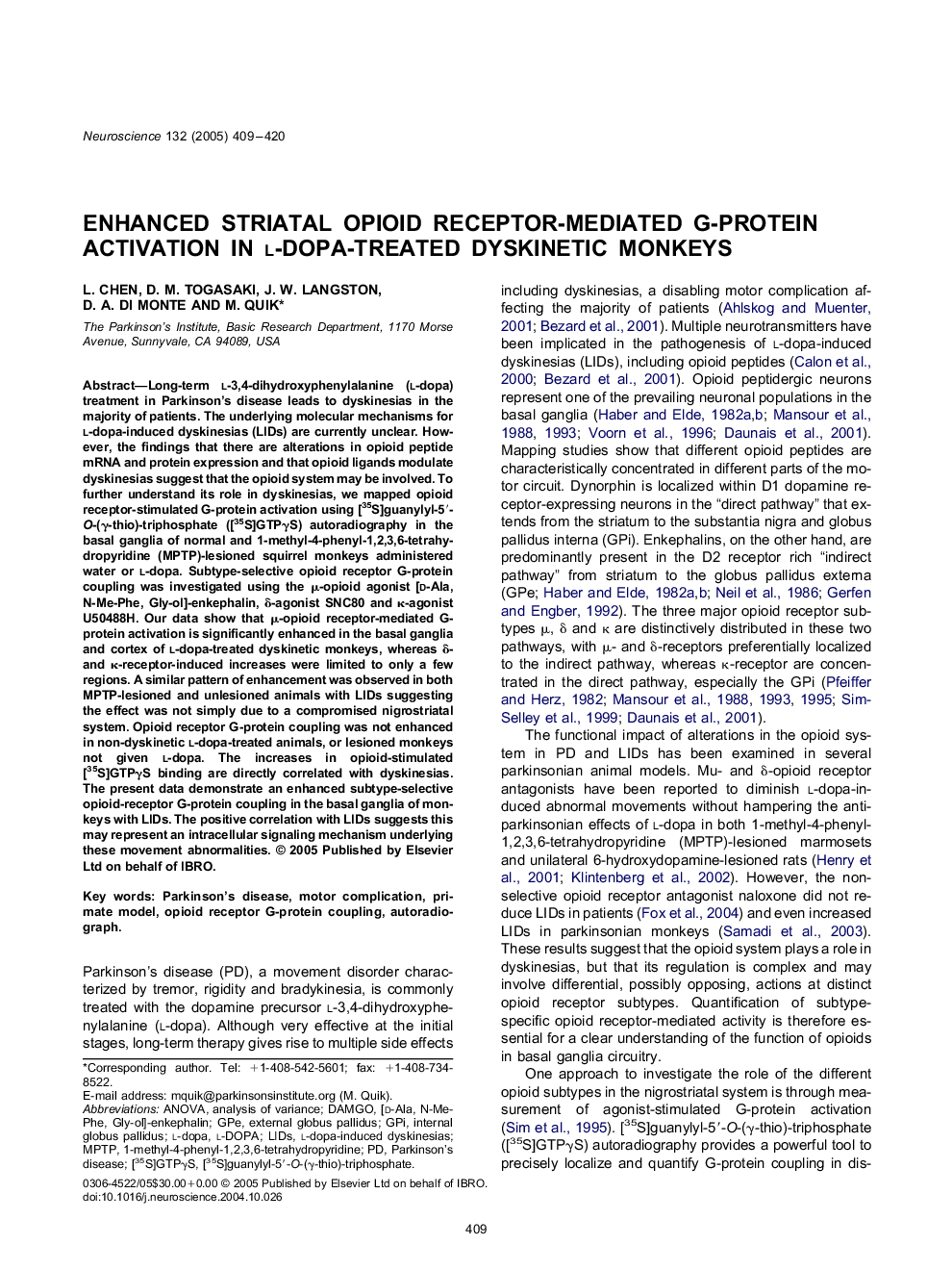| Article ID | Journal | Published Year | Pages | File Type |
|---|---|---|---|---|
| 9425649 | Neuroscience | 2005 | 12 Pages |
Abstract
Long-term l-3,4-dihydroxyphenylalanine (l-dopa) treatment in Parkinson's disease leads to dyskinesias in the majority of patients. The underlying molecular mechanisms for l-dopa-induced dyskinesias (LIDs) are currently unclear. However, the findings that there are alterations in opioid peptide mRNA and protein expression and that opioid ligands modulate dyskinesias suggest that the opioid system may be involved. To further understand its role in dyskinesias, we mapped opioid receptor-stimulated G-protein activation using [35S]guanylyl-5â²-O-(γ-thio)-triphosphate ([35S]GTPγS) autoradiography in the basal ganglia of normal and 1-methyl-4-phenyl-1,2,3,6-tetrahydropyridine (MPTP)-lesioned squirrel monkeys administered water or l-dopa. Subtype-selective opioid receptor G-protein coupling was investigated using the μ-opioid agonist [d-Ala, N-Me-Phe, Gly-ol]-enkephalin, δ-agonist SNC80 and κ-agonist U50488H. Our data show that μ-opioid receptor-mediated G-protein activation is significantly enhanced in the basal ganglia and cortex of l-dopa-treated dyskinetic monkeys, whereas δ- and κ-receptor-induced increases were limited to only a few regions. A similar pattern of enhancement was observed in both MPTP-lesioned and unlesioned animals with LIDs suggesting the effect was not simply due to a compromised nigrostriatal system. Opioid receptor G-protein coupling was not enhanced in non-dyskinetic l-dopa-treated animals, or lesioned monkeys not given l-dopa. The increases in opioid-stimulated [35S]GTPγS binding are directly correlated with dyskinesias. The present data demonstrate an enhanced subtype-selective opioid-receptor G-protein coupling in the basal ganglia of monkeys with LIDs. The positive correlation with LIDs suggests this may represent an intracellular signaling mechanism underlying these movement abnormalities.
Keywords
Related Topics
Life Sciences
Neuroscience
Neuroscience (General)
Authors
L. Chen, D.M. Togasaki, J.W. Langston, D.A. Di Monte, M. Quik,
